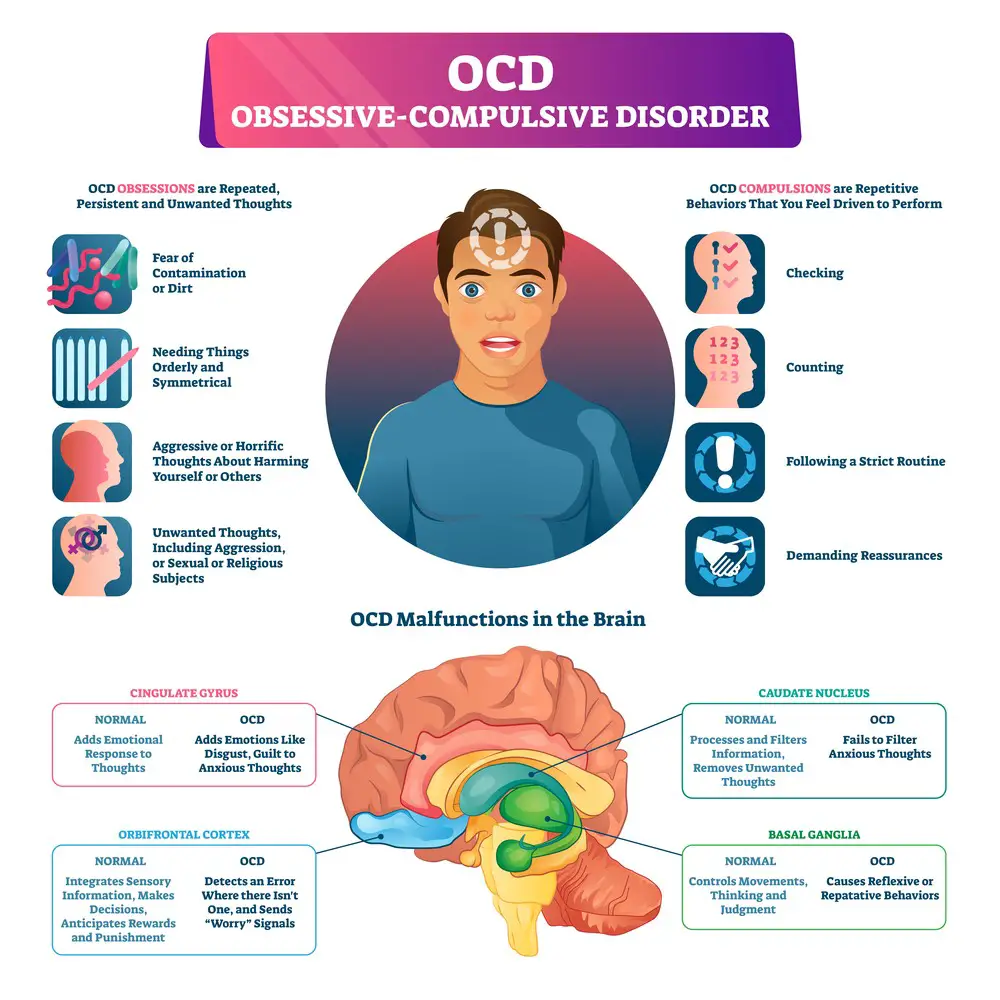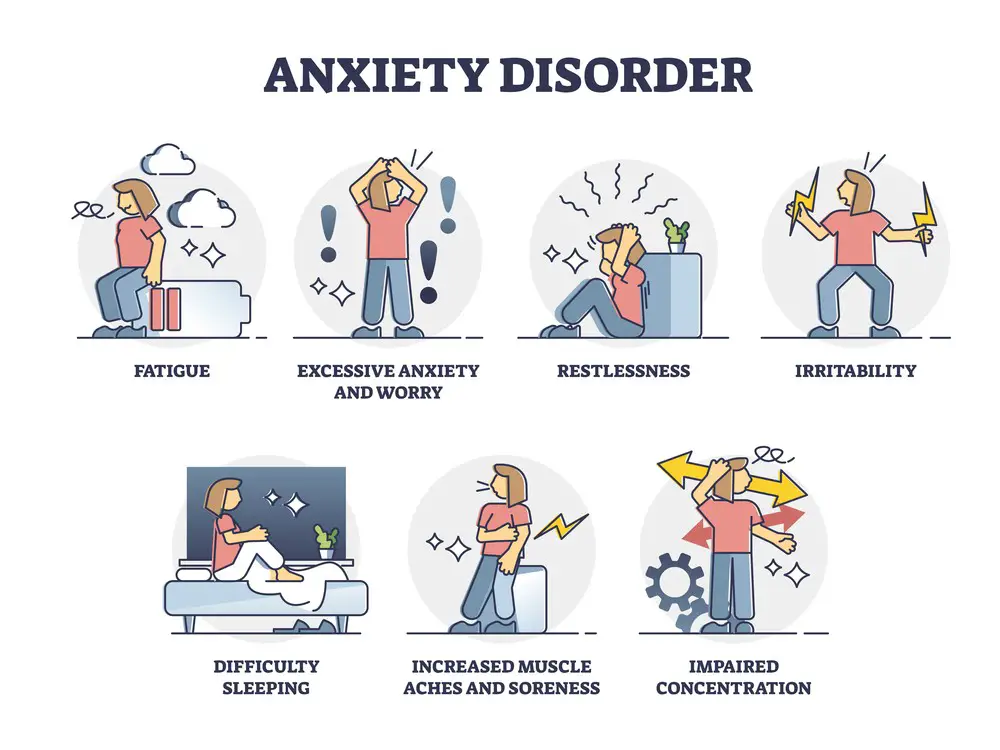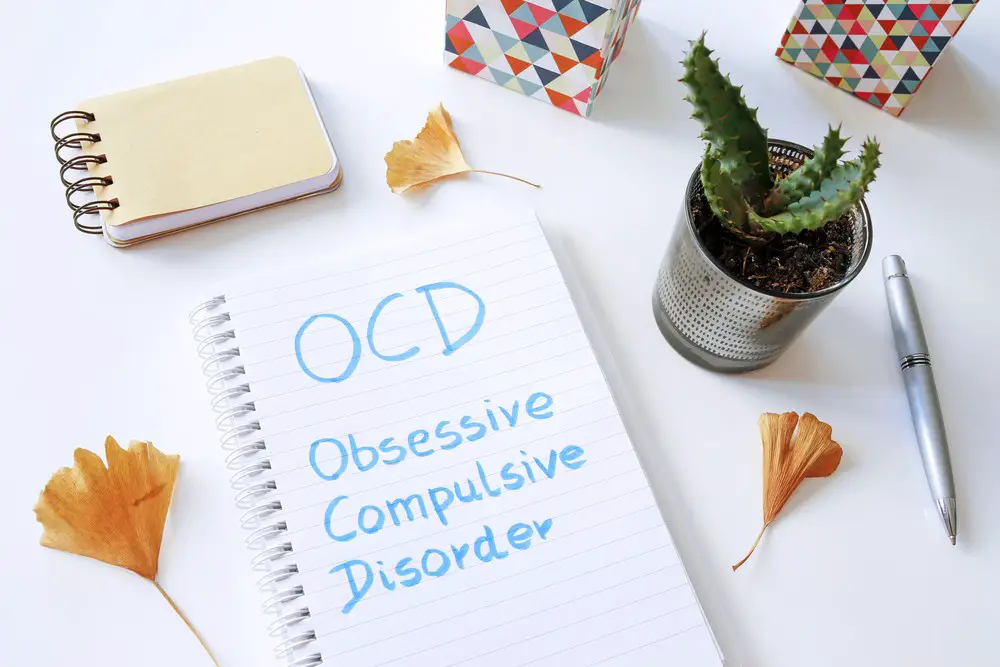Obsessive-Compulsive Disorder (OCD) is a mental health condition characterized by a pattern of intrusive, unwanted thoughts (obsessions) and repetitive behaviors (compulsions) that interfere with an individual’s daily life and cause significant distress. One of the most challenging aspects of OCD is the intense realism experienced with obsessions, making it difficult for sufferers to dismiss or ignore them. Many people struggling with OCD often wonder why these thoughts feel so real, even when they logically understand that they are irrational.
The nature of OCD thoughts can largely be attributed to the brain’s complex neurochemistry and the influential role of anxiety and stress in amplifying these intrusive thought patterns. When an individual with OCD experiences an obsessive thought, it becomes linked to an anxiety-inducing false sense of urgency, which in turn drives the compulsive behavior as an attempt to alleviate the distress. The relationship between obsessions, anxiety, and compulsions creates a detrimental cycle that continuously reinforces the perceived authenticity of OCD thoughts.
Key Takeaways
- OCD is characterized by intrusive thoughts and repetitive behaviors that cause distress and interfere with daily life
- The realistic feeling of OCD thoughts can be attributed to the brain’s neurochemistry and the influence of anxiety and stress
- The cycle of obsessions, anxiety, and compulsions further reinforces the perceived authenticity of OCD thoughts
 Understanding Obsessive-Compulsive Disorder (OCD)
Understanding Obsessive-Compulsive Disorder (OCD)
Obsessive-Compulsive Disorder (OCD) is a common mental health disorder that falls under the category of anxiety disorders. It involves a pattern of unwanted thoughts and fears, known as obsessions, which lead you to perform repetitive behaviors called compulsions. These obsessions and compulsions can significantly interfere with your daily activities and cause distress.
Obsessive-Compulsive Disorder (OCD) thoughts can feel extremely convincing because they are intrusive and difficult to control. Even if you know that these thoughts are irrational, it can be challenging to ignore them or prevent them from influencing your actions. This is a defining feature of the disorder and one that makes it particularly difficult to manage.
For someone with OCD, the obsessions can manifest in many different forms, such as:
- Excessive cleaning due to fear of germs
- Repeatedly checking locks, appliances, or switches due to safety concerns
- Counting, tapping, or repeating a specific word or phrase to relieve anxiety
To properly diagnose OCD, a mental health professional will evaluate your symptoms and determine if they are significantly interfering with your life. The main criteria for an OCD diagnosis are:
- Presence of obsessions and compulsions
- Recognition that these thoughts and behaviors are excessive or unreasonable
- Significant interference in daily functioning
It’s important to remember that OCD is a treatable mental health disorder. Various strategies and therapies are available to help you cope with and manage your symptoms. These may include cognitive-behavioral therapy (CBT), exposure and response prevention therapy (ERP), and medication. By seeking professional help and using these strategies, you can learn to manage your OCD better and regain control over your life.
 The Nature of OCD Thoughts
The Nature of OCD Thoughts
Obsessive-compulsive disorder (OCD) is a mental health condition characterized by intrusive thoughts and compulsive behavior. It often causes significant distress and disrupts daily life. Intrusive thoughts are persistent, unwanted, and often distressing, causing individuals to feel out of control.
Intrusive thoughts can come in various forms, such as doubts, fears, or violent images. These thoughts are often irrational and exaggerated. Common obsessions include:
- Fear of contamination
- Fear of harm to oneself or others
- Intrusive sexual thoughts
- Constant worries about losing control or going crazy
These persistent thoughts create a sense of doubt, leading to distress and anxiety. To manage this anxiety, individuals with OCD engage in rituals or compulsions. By performing these rituals, the person feels temporary relief from the anxiety caused by their intrusive thoughts.
One reason why OCD thoughts feel so real is the emotional reaction they evoke. The distress caused by these thoughts leads to the belief that they must be important or dangerous. This makes it harder to dismiss them as irrational or irrelevant.
Another factor contributing to the realness of OCD thoughts is the individual’s struggle to control them. People with OCD often try to suppress or neutralize their intrusive thoughts, which can paradoxically make them even more persistent and distressing. This cycle can further reinforce the belief that the thoughts are legitimate and important.
Additionally, individuals with OCD tend to have a heightened sense of responsibility and an inflated fear of causing harm. This can make even the most irrational concerns feel extremely significant and real.
In conclusion, the nature of OCD thoughts stems from a combination of factors, including the emotional distress they cause, the difficulty in controlling them, and the inflated sense of responsibility individuals with the disorder often experience. By understanding these factors, you can better recognize and manage your own OCD thoughts and symptoms. Remember, acknowledging and seeking help for your OCD is a crucial step towards leading a more manageable and fulfilling life.
 The Impact of Stress and Anxiety
The Impact of Stress and Anxiety
When you’re experiencing OCD thoughts, stress and anxiety can further intensify the feelings of fear and guilt associated with them. Anxiety tends to exacerbate these intrusive thoughts, making them feel even more accurate and distressing.
While a stressful event might trigger anxiety and heighten OCD symptoms, it’s crucial to recognize that these intrusive thoughts don’t represent your true desires or beliefs. They’re often a result of your brain’s attempt to process and find relief from your worries and stresses.
To cope with stress and anxiety while dealing with OCD thoughts, consider the following strategies:
- Focus on coping mechanisms: Develop healthy ways to manage stress, such as deep breathing, meditation, and exercise. This helps you direct your energy towards positive outcomes, reducing the intensity of your intrusive thoughts.
- Acknowledge the thoughts without reacting: Instead of trying to suppress or avoid your OCD thoughts, acknowledge their existence without giving in to the fear or guilt they may evoke. This can help you diminish their power and influence over your emotions.
- Seek support: It’s essential to contact friends, family, or a mental health professional for guidance and encouragement. Connecting with others who also experience OCD can provide valuable insights into coping strategies and resilience.
Remember, the more you can manage your stress and anxiety, the better equipped you’ll be to handle and overcome the debilitating effects of OCD thoughts. By implementing these strategies, you can create a healthier mindset and work towards a more balanced and fulfilling life.
 Dealing with OCD: Treatments and Therapies
Dealing with OCD: Treatments and Therapies
Obsessive thoughts can be distressing and uncomfortable. However, various therapies are available to manage this condition.
Firstly, you’ll want to seek the help of a mental health professional or healthcare provider who is experienced in diagnosing and treating OCD. They can guide you through the various options and help determine the best course of action for your specific situation.
One of the most well-known and effective treatments for OCD is Cognitive Behavioral Therapy (CBT). This form of therapy aims to help you recognize and understand your thought patterns, enabling you to develop healthier coping strategies. In the context of OCD, a specific type of CBT called Exposure and Response Prevention (ERP) is often used. ERP focuses on gradually exposing you to your obsessions and fears while helping you resist engaging in compulsive behaviors, teaching you to tolerate and eventually diminish distress.
Aside from therapy, medications can also be effective in managing OCD symptoms. Your healthcare provider may prescribe medications, such as antidepressants or selective serotonin reuptake inhibitors (SSRIs), to help regulate the imbalance of chemicals in your brain that may be contributing to the intrusive thoughts and compulsions associated with OCD.
In your journey to manage OCD, it’s essential to develop and practice your strategies for coping with unwanted thoughts and behaviors. This might include:
- Maintaining a daily routine to provide structure and stability
- Engaging in regular exercise and practicing relaxation techniques, such as deep breathing or mediation
- Communicating with supportive friends and family to create a strong support network
- Actively participating in your treatment plan and setting achievable goals to track your progress
Remember, dealing with OCD is a process, and what works for one person may not work for you. Stay patient and open to trying new approaches, and don’t hesitate to communicate with your healthcare provider if you feel your treatment plan needs to be adjusted. With the right combination of treatments and therapies, you can effectively manage your OCD and lead a fulfilling life.
 The Role of Compulsions in OCD
The Role of Compulsions in OCD
Compulsions in OCD are repetitive and seemingly purposeful behaviors that you feel driven to perform to relieve anxiety caused by intrusive and obsessive thoughts. These behaviors often provide temporary relief, but the obsessions typically return, leading to a cycle of compulsions and distress.
Some common compulsions include:
- Washing: You may need to clean and wash your hands or other body parts excessively to reduce the fear of contamination.
- Checking: Frequent rechecking of things like locks, appliances, or switches to ensure safety and prevent harm.
- Cleaning: The urge to clean your surroundings obsessively, fearing contamination and dirt.
- Hand-washing: Excessive hand-washing, often until your skin becomes raw and damaged.
- Repetitive behaviors: Engaging in actions such as counting, tapping, or repeating specific words or phrases to reduce anxiety.
These compulsions are typically related to specific obsessions, such as fear of germs, harm, or making mistakes. The more you engage in compulsive behaviors, the more real and valid your obsessive thoughts may feel. In time, the compulsions can fuel your obsessions, reinforcing the belief that these thoughts are genuine and require urgent attention.
To better manage your OCD, it’s crucial to recognize the role compulsions play in maintaining your obsessive thoughts. By understanding the connection between your obsessions and compulsions, you can work towards breaking the cycle and taking control over your thoughts and actions. This can be achieved through various therapeutic approaches, such as Cognitive Behavioral Therapy (CBT) or Exposure and Response Prevention (ERP), which can help you confront and reduce your reliance on compulsive behaviors.
Key takeaway: Compulsions in OCD are closely linked to obsessions, reinforcing the belief that the thoughts are real. Recognizing the relationship between obsessions and compulsions is vital in managing your OCD.
 Genetics and Environment: The Causes of OCD
Genetics and Environment: The Causes of OCD
Obsessive-compulsive disorder (OCD) is a complex psychiatric condition influenced by a combination of genetic and environmental factors. In this section, we’ll delve into what research has discovered about the causes behind OCD and why its thoughts might feel so distressingly real to those who experience it.
Firstly, numerous studies have demonstrated that genetics play an essential role in the development of OCD. Twin studies have revealed that OCD tends to cluster in families, indicating that there might be a hereditary component to the disorder. Although specific genes linked to OCD have not been conclusively identified, ongoing research provides increasing evidence that genetic predisposition is a significant contributor to OCD’s onset.
In addition to genetics, environmental factors also influence the development of OCD. Life stressors and significant events, such as trauma, illness, or familial instability, can trigger or exacerbate OCD symptoms. A history of physical or emotional abuse during childhood has also been associated with an increased risk of developing the disorder.
The interaction between genetics and the environment is crucial to understanding why OCD thoughts can feel so real. You see, the combination of genetic predisposition and environmental factors might result in changes in brain structure and function, particularly in decision-making, emotion regulation, and threat detection regions. These alterations might make it more challenging for individuals with OCD to dismiss or suppress their intrusive thoughts, which can feel very real and urgent.
It’s important to remember that research on the causes of OCD is ongoing. As science continues to uncover the relationships between genetics, the environment, and the brain, we will gain a better understanding of why OCD thoughts feel so real and become better equipped to support those who experience them.
Key takeaway: The causes of OCD are complex and involve a combination of genetic predisposition and environmental factors, which interact to impact the brain structure and function. This interplay might partially explain why thoughts in OCD can feel so real and challenging to dismiss.

Coping with Shame and Guilt in OCD
Feeling shame and guilt in OCD can be challenging, but there are ways to handle these emotions and make living with OCD more manageable.
Firstly, remember that your OCD thoughts are not a reflection of your true character. It’s essential to separate yourself from the obsessive thoughts and compulsions. Recognize that OCD is an illness, and these feelings are symptoms rather than true indicators of who you are. Remember, you are not your thoughts.
Working on self-compassion can provide relief from the shame and guilt that accompany OCD. Practice kindness towards yourself, acknowledging your struggles, and reminding yourself that everyone has their challenges. Validate that feeling guilt or shame is okay, but don’t let it consume you or define your worth.
Seeking professional help, such as therapy, can effectively tackle feelings of shame and guilt. A mental health professional can guide you through techniques to manage these emotions and develop healthier coping mechanisms. Cognitive-behavioral therapy (CBT), in particular, has shown significant success in treating OCD.
Developing healthy communication skills is also crucial in managing shame and guilt. Confessing your obsessive thoughts or seeking reassurance from others may seem helpful in the short term but can further fuel your guilt and overcome the therapeutic process. Instead, discuss your feelings openly and honestly with those close to you, fostering understanding and support.
Incorporating relaxation techniques, such as meditation or deep breathing exercises, can help reduce stress and alleviate feelings of guilt and shame. Focusing on the present moment allows you to unwind your thoughts and free yourself from distressing emotions.
Finally, engaging in activities that you enjoy and bring you a sense of achievement can boost your self-esteem and reduce feelings of guilt and shame. By investing time and energy in constructive pursuits, you can counterbalance the negative emotions associated with OCD.
Remember, coping with shame and guilt in OCD is a continuous journey, and finding the strategies that work best for you can make a significant difference in your well-being and overall mental health.
 Symmetry and Order: Unique OCD Traits
Symmetry and Order: Unique OCD Traits
Symmetry and order are standard features of obsessive-compulsive disorder (OCD). They manifest as a strong desire for balance, organization, and arranged items in a particular way. People with OCD may have intrusive thoughts and compulsive behaviors associated with maintaining order and symmetry. Let’s discuss these unique traits and understand their significance in OCD.
Rules and routines:
To achieve a sense of order, individuals with OCD may establish strict rules and routines. These can involve an obsessive focus on arranging items in a specific manner, engaging in repeated behavior patterns, or adhering to specific rituals. While rules and routines can provide some comfort to these individuals, they can also exacerbate the symptoms of OCD in the long run by reinforcing obsessive thoughts and compulsive behaviors.
The role of anxiety:
Feeling anxiety when encountering a disorder or asymmetry is common for those with symmetry and order OCD. The anxiety can be so overwhelming that they feel compelled to act on their obsessions to alleviate the distress. For example, a person with symmetry OCD might experience severe anxiety if the objects in their surroundings aren’t correctly aligned or balanced.
Coping strategies:
It’s crucial to recognize that these obsessive thoughts and compulsions aren’t rational but rather a product of your OCD. Remember that trying to suppress or ignore them could worsen the problem. Instead, you can:
- Seek professional help, such as cognitive-behavioral therapy (CBT), which is an effective treatment for OCD.
- Practice mindfulness and accept the intrusive thoughts without engaging in compulsions.
- Focus on activities that genuinely bring joy and relaxation to your life.
Remember, understanding and addressing the underlying anxiety that drives your OCD symptoms is essential for recovery. With professional guidance and a commitment to self-care, you can learn how to manage the unique traits of symmetry and order OCD.
Contextualizing OCD: In Men and Childhood
Obsessive-compulsive disorder (OCD) can manifest differently in men and during childhood. It’s essential to take these factors into account to understand better why OCD thoughts feel so real.
In many cases, OCD begins in childhood or adolescence, which can create a particularly profound impact on a person’s development. Children may not have the emotional maturity or knowledge to recognize that their repetitive behaviors are signs of OCD. As a result, they might experience an increased sense of reality regarding their obsessions and compulsions.
For example, consider the following ordinary childhood OCD manifestations:
- Excessive hand washing due to fear of germs
- Repeatedly checking if doors are locked or appliances are turned off
- Extreme preoccupation with order and cleanliness
Understanding and treating OCD in childhood is crucial because early intervention can help prevent the disorder from causing long-term problems in the person’s life. Early intervention can also teach valuable coping strategies that may have lasting positive effects as they grow into adulthood.
Now, let’s focus on how OCD affects men specifically. While OCD might not differ significantly between genders, societal expectations and stigmas can influence how men experience the disorder. For example, men might feel more pressure to suppress their emotions or downplay the severity of their obsessive thoughts, which could contribute to the thoughts seeming more real.
In addition, men may experience unique themes in their OCD-related thoughts, amplifying the sense of reality. Some common manifestations of OCD for men could include:
- Fear of causing harm to oneself or others
- Excessive concern with symmetry and orderliness
- Repetitive checking or reassurance-seeking
To support men dealing with OCD, it’s essential to acknowledge and validate their experiences. Encouraging open communication and providing a judgment-free environment can go a long way in helping men cope with the disorder and manage the impact of these thoughts on their daily lives.
Key Takeaway: Recognizing the particular contexts in which OCD affects men and children is crucial for understanding why these thoughts feel so real and devising tailored strategies to manage the disorder effectively. Early intervention during childhood and removing stigmas for men can create lasting positive effects and improve quality of life.
Frequently Asked Questions
Why do OCD thoughts feel like urges?
OCD thoughts can feel like urges because they often trigger a strong emotional response, such as anxiety or distress. This emotional reaction can lead to a desire to perform a specific action or engage in a behavior to relieve the tension. For individuals with OCD, these compulsions can provide temporary relief from the anxiety caused by their obsessions.
Can OCD manifest as false feelings?
Yes, OCD can manifest as false feelings. These false sensations or emotions can be a result of the intrusive thoughts that often accompany the disorder. As your mind focuses on these thoughts, it may create feelings that aren’t genuine or based on reality, further fueling the cycle of OCD.
How do OCD thoughts differ from real ones?
OCD thoughts, or obsessions, tend to be intrusive, distressing, and persistent. They can be irrational, exaggerated, or distorted, making them difficult to ignore. In contrast, real thoughts are grounded in reality, logic, and rationality. They typically do not cause intense anxiety or distress like OCD thoughts do.
Why are intrusive thoughts so convincing?
Intrusive thoughts are convincing because they can incite strong emotions, like fear or guilt. These emotions can feel real, even though the thoughts may be irrational or unlikely. Because they often focus on our deepest insecurities or concerns, these thoughts gain momentum and become more convincing the more we try to suppress or ignore them.
How to differentiate between OCD and reality?
Differentiating between OCD thoughts and reality can be challenging, but there are a few strategies to help:
- Recognize the thought patterns: OCD thoughts tend to be intrusive, irrational, and consistent in theme.
- Seek professional help: A mental health professional can help diagnose and treat OCD.
- Focus on evidence: Remind yourself of the facts and real-life experiences contradicting your OCD thoughts.
- Practice mindfulness: Engaging in activities that promote mindfulness and self-awareness can help you differentiate between OCD thoughts and reality.
Do OCD thoughts always represent our desires?
No, OCD thoughts do not always represent our desires. They often focus on themes that are contrary to our values or preferences. These thoughts can be disturbing or distressing, causing individuals to feel guilt or shame for having them. Recognize that these thoughts are symptoms of OCD, not a reflection of your true desires or character.
- How to Reduce Anxiety Immediately: Quick and Effective Techniques - February 15, 2024
- Can Stress Cause Bloating? Understanding The Link Between Stress And Digestive Issues - February 15, 2024
- The Best Time To Sleep: A Guide To Optimal Rest - February 15, 2024
This site contains affiliate links to products. We will receive a commission for purchases made through these links.


 Understanding Obsessive-Compulsive Disorder (OCD)
Understanding Obsessive-Compulsive Disorder (OCD) The Nature of OCD Thoughts
The Nature of OCD Thoughts The Impact of Stress and Anxiety
The Impact of Stress and Anxiety Dealing with OCD: Treatments and Therapies
Dealing with OCD: Treatments and Therapies The Role of Compulsions in OCD
The Role of Compulsions in OCD Genetics and Environment: The Causes of OCD
Genetics and Environment: The Causes of OCD Symmetry and Order: Unique OCD Traits
Symmetry and Order: Unique OCD Traits

